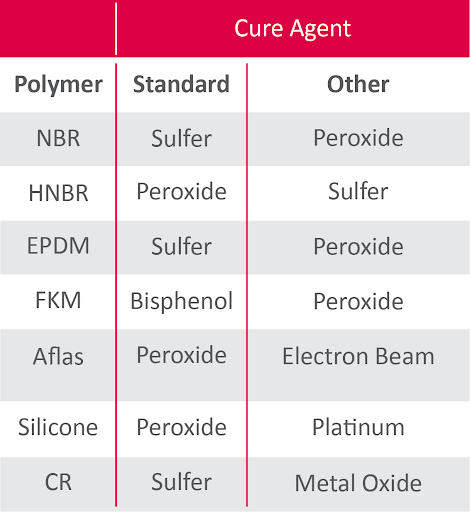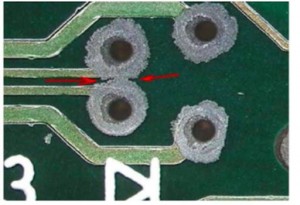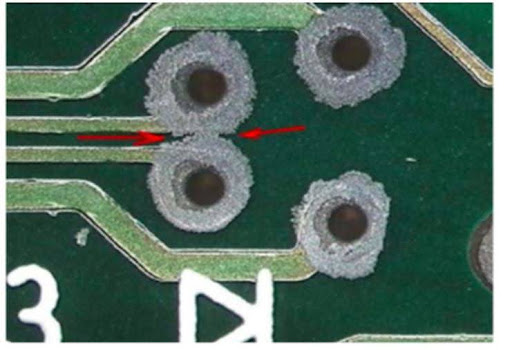An often overlooked element in the electronics industry is sealing materials being used to protect electronic components from moisture or liquid contaminates. The problem: The same sealing material protecting the electronics from water might also be causing the electronics to corrode and fail.
Failure Mode
Sulfur leads to creep corrosion by attacking copper and sometimes silver. Free sulfur and natural humidity can form, resulting in a weak sulfuric acid, H2SO4. Oxidized copper reacts with the H2SO4 to form Copper Sulfide, Cu2S. Cu2S precipitates into crystalline masses that grow across the printed circuit boards (PCB), leading to electrical shorts. *
Precipitates of Copper Sulfides on PCB*
Rubber Curing
Rubber sealing compounds typically use sulfur as the vulcanization agent. The curing agent causes bonding through the polymer chains and allows the rubber to resist compression, making it a better sealing material. Without curing agents, compounds would act more like plastic and deform, never rebounding and losing any sealing force. The below table is a list of polymers and typical curing systems.

One of the most used polymers is NBR or Buna-N rubber for o-rings and housing seals. In most cases, sulfur curing systems are used to vulcanize these compounds.
Options to Reduce Sulfur Outgassing
When curing rubber with sulfur, small amounts of unreacted sulfur will be left in the rubber after the curing process. This sulfur is incompatible with the rubber. Sulfur will then bloom to the surface. As the sulfur permeates out of the rubber, it will outgas into the environment. Most people smell this when around large amounts of rubber, especially at elevated temperatures. Environmental humidity can cause H2SO4.
If no petroleum or short-term exposures like splashes exist, a peroxide cure EPDM is a good choice. EPDM also has excellent water permeability resistance, which protects electronics from humidity.
If there is a higher presence of petroleum, peroxide-cured HNBR, AFLAS, or FKM can be used. If the electronic device being sealed will be exposed to low temperatures, HNBR is a better choice. There are low-temperature versions of FKM, but they can be more expensive. FKM is an excellent choice for vacuum applications because the material is typically post-cured and has minimal residue to outgas. FKM is a perfect choice for space applications.
Silicone and Fluorosilicones can also be used, but with caution. Silicones are very permeable, so they will allow water vapor to penetrate. Both materials can also outgas low molecular weight silicone oil, which could cause problems in some circuits.
Apple Rubber has extensive choices of sealing materials that work in all different applications. We also have compounds specifically listed to UL JMLU2 with end-use codes for gasoline, natural gas, propane, and UL 50E (for electrical enclosures). For more information, please contact us here.
*Emerson, “What is Creep Corrosion and How to Avoid or Mitigate it?”, https://knowledge.ni.com/KnowledgeArticleDetails?id=kA00Z000000kIpsSAE&l=en-US

